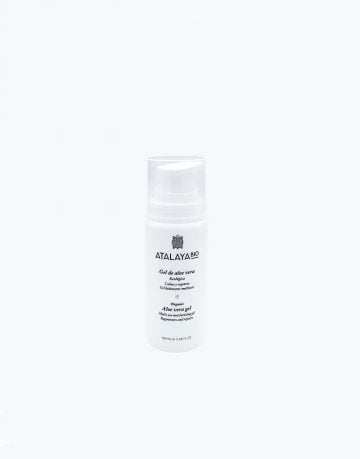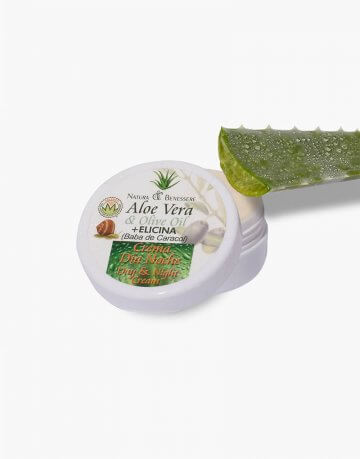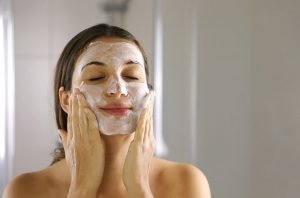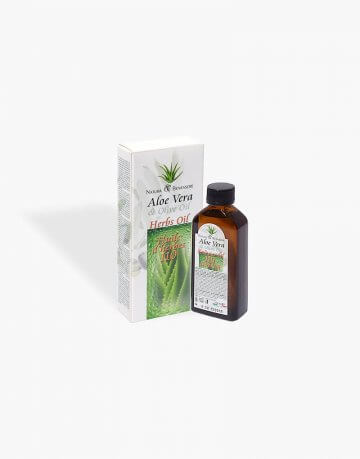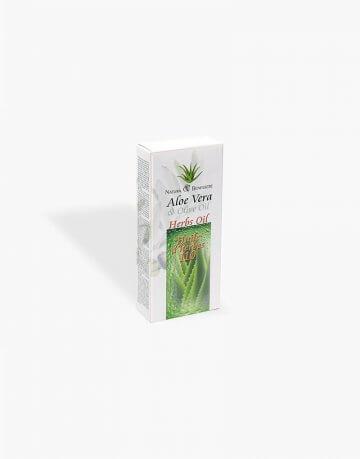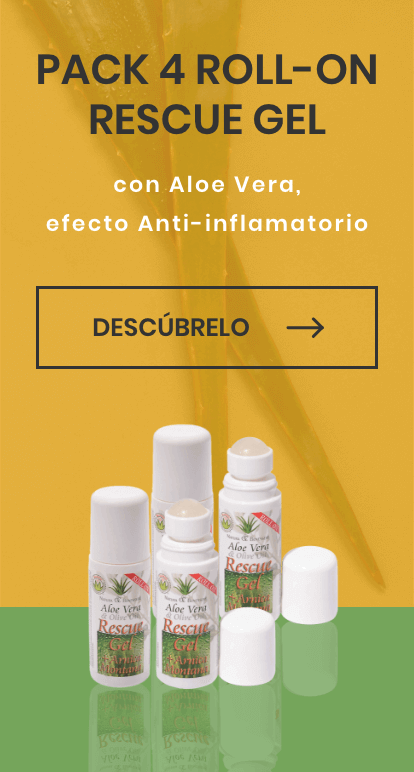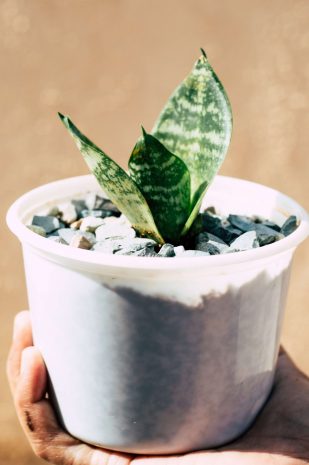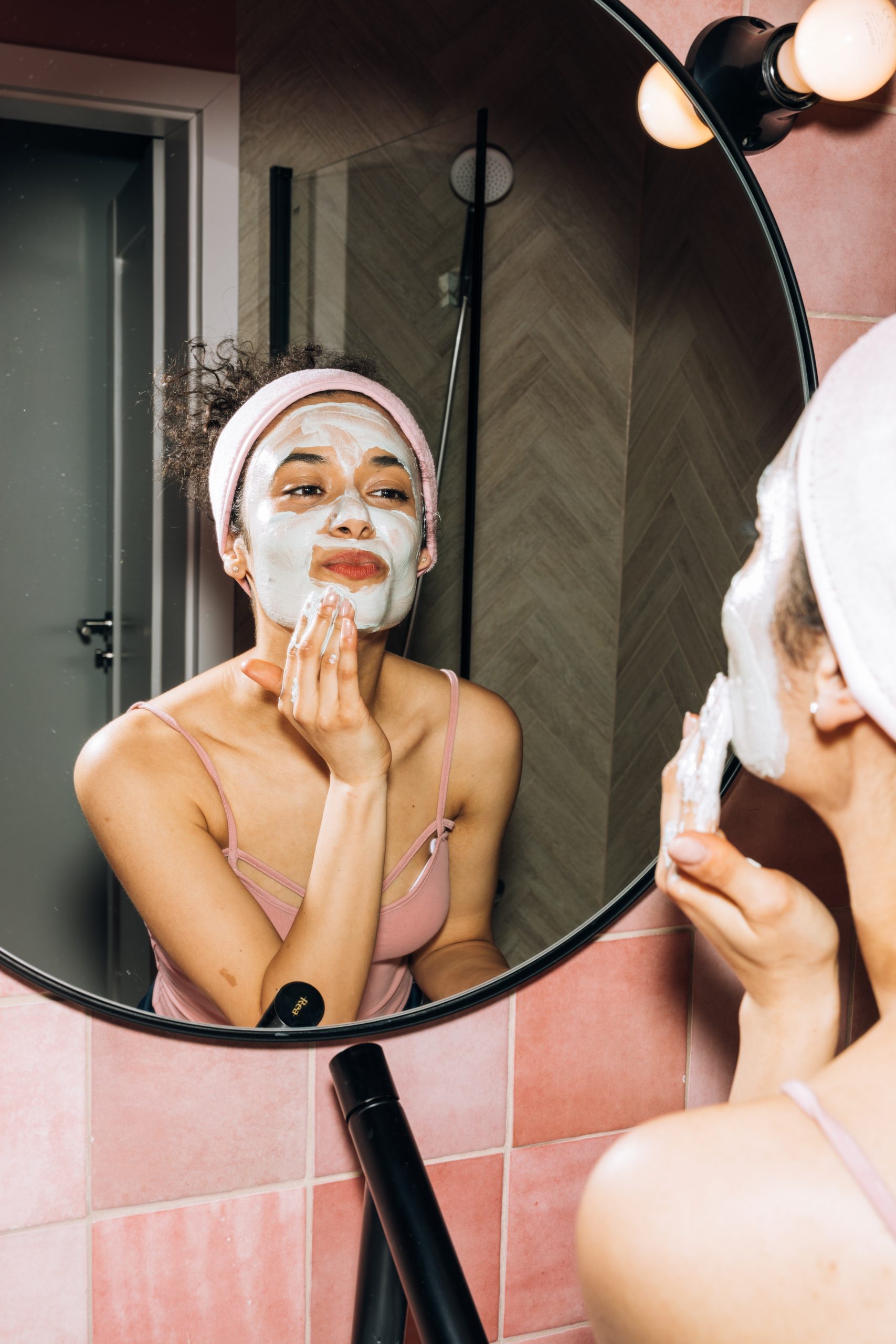ALOE VERA
Do you want to know everything about Aloe Vera? In this post we explain everything, from its origin in Mesopotamia, the benefits of Aloe Vera for your wellbeing, how to take care of your diet with Aloe Vera and which products and treatments are the most suitable for your needs. Discover everything you need to know about Aloe Vera to get the most out of this incredible medicinal plant.
ORIGIN AND USES OF ALOE VERA
It all started in Mesopotamia, where the first reference to Aloe Vera was found, specifically in 2200 BC on the clay tablets of Nippur.
Some data point to Egypt or the Middle East as the place of origin of Aloe Vera. It was in the year 1550 BC when the Egyptians, through the Eber Papyrus, represented some of the benefits of this plant, which they considered to be the "plant of immortality". That is why it used to be a gift at funerals as it represented the renewal of life. There is also evidence that Aloe Vera was planted around the pyramids and when the plant flowered it meant that the pharaoh was already safe in the afterlife, as the plant would care for him and feed him during his journey.
It was also used to preserve corpses, as they believed that if the body did not decompose, eternal life would be achieved, and this was thanks to the fungicidal and bactericidal effects of Aloe Vera. It was known as "the plant of immortality", as it helped to preserve corpses.
In 1552 BC, during the reign of the pharaoh Amenhotep, a papyrus was found in the knees of a mummy where they wrote 12 formulas for preparing Aloe Vera that had been used for the previous 2000 years.
It was also in Egypt that they began to use this miraculous plant as a beauty product. It was Cleopatra and Nefertiti who began to use Aloe Vera in their beauty routines, it was one of the secrets that these two Egyptian queens had to have smooth skin, as this plant was able to preserve the splendour of women forever. But it was not only used on the skin, it is said that the famous glow in Cleopatra's eyes was thanks to an eye drop that was made with Aloe.
In Ancient Greece, Aloe symbolised health, beauty, fortune and patience, which is why it was considered a plant of great value. It is said that Alexander the Great (356-323 BC), king of Macedonia, was wounded by an arrow and his master Aristotle sent a priest to heal the wound with Aloe Vera from the island of Socotra. This is why Alexander the Great decided to conquer the island, to get hold of its Aloe plantations and to be able to cure his warriors.
Ancient Greek physicians such as Hippocrates, Dioscorides and Pliny the Elder wrote about the healing effects and benefits of this plant. This can be reflected in two very important works. The first one was written by Dioscorides and it is, besides being the first book written by a Greek doctor, the main pharmacological book in the West where he describes some of the medicinal properties of Aloe Vera, such as the fact that it is able to cure skin diseases and improve liver problems. He also wrote that this plant is able to accelerate hair growth, alleviate digestive problems and even cure tumours.
Another famous work is that of Pliny the Elder, who wrote Natural History, where we find 37 books that affirm and add to Dioscorides' findings.
It was around the year 50 AD, with the Emperor Nero in power, when the Romans began to use this miraculous plant. This is due to the fact that the physician Dioscorides at that time made many trips to the East, and through his great masterpiece he spread his knowledge about the effects of Aloe. From then on, the Romans listened to Dioscorides and started to use aloe. They recommended its juice for stomach upsets, treating wounds, inflammation of the gums, muscular pains and above all they were surprised by its healing power, which is why it was used to heal the wounds and scars of warriors.
The Arabs were the first to commercialise the plant and thanks to this, Aloe was exported to Persia and India. For its conservation during these long commercial journeys, the pulp was extracted with wooden presses or by treading the leaves, after extracting all the pulp, it was left to dry in the sun so that the pure gel remained in powder form, in this way its commercialisation was much easier, because in this way the plant would not lose its properties and its conservation in this state was much better as during the long commercialisation journeys the plant could be damaged if it did not receive the necessary care.
Aloe appeared in Chinese writings as early as 3000 B.C. Even in the Chinese Book of Medicinal Herbs, which is said to have taken about two centuries to write, the benefits of aloe appear in most of its volumes. The Chinese culture, since the travels of Marco Polo, knew about the healing properties of the plant.
The Chinese considered Aloe as a medicine used to treat skin diseases and to relieve burns. In addition, its thorns were used as needles for acupuncture, a technique practised by itinerant therapists.
In Japan, Aloe Vera was used by the samurai, who believed that it was capable of warding off evil spirits, which is why they smeared themselves with Aloe Vera gel in order to expel demons and become immortal.
Aloe Vera was considered one of the sacred plants by the American Indians. The leaves were cooked in ashes and consumed as food, the pulp was used to heal wounds and stop haemorrhages and its gel was consumed for medicinal purposes, to soothe belly pains, remove coughs and cleanse the kidneys and bladder, among many other uses.
Aloe Vera appeared in Spain for the first time in the 7th century when the conquest of the Iberian Peninsula by the Arabs began. It was cultivated in Andalusia, as the weather conditions in the area favoured its cultivation, the sunny climate and its proximity to the sea.
It is said that, on his voyages to the New World, Columbus kept Aloe Vera plants in pots to be able to cure his crew members of possible injuries. Such was the importance he attached to this plant that it is even said that in his diary he wrote a sentence that read: "All is well, there is aloe on board".
Also, during the 16th century, the monks who are known to be the most knowledgeable about plants and their effects, the so-called Spanish Jesuit monks, collected aloe plants and propagated them in places that were still unaware of their benefits.
Aloe Vera spread across cultures, but the reason that made this plant known and used all over the world was the Second World War. After the radiation caused by the atomic bombs Hiroshima and Nagasaki, the Americans realised that the Japanese recovered better with Aloe Vera than the wounded who were treated by the American doctors and the American means. It was from then on that they began to investigate in depth all its properties.
In 1970, it was Bill Coat who obtained the Aloe Vera gel that we know today. He did this by separating the Aloin from the bark of the plant and adding the vitamin C and E from the leaf itself. It was then that a new industry was created and it began to be marketed.
DISCOVER ALL TYPES OF ALOE
- How many types of Aloe are there?
- Types of Aloe suitable for cosmetic use
- Types of medicinal Aloe
How many types of Aloe are there?
Aloe is a plant that is considered to be medicinal or beneficial for the skin, and there are over 300 varieties. This is because not all Aloe Vera plants that are cultivated contain the properties that make it a miracle plant, some simply serve as decoration. Below, we will talk about some of the most typical or popular ones.
Aloe Vera Suitable for Cosmetic Use
The variety of Aloe Vera that contains the most benefits is Aloe Barbadensis, as it is rich in minerals, vitamins, enzymes and amino acids. These are the benefits contained in this miracle plant:
- Cleansing effect, thanks to its high content of saponins that manage to penetrate deep into the pores, it eliminates the dirt found on our skin. It reduces the likelihood of infections, due to the great antiseptic power of this plant.
- Intense nourishment, its richness in minerals such as calcium, zinc, magnesium, copper, phosphorus and potassium, help the skin to hydrate immediately and absorb all the beneficial components provided by Aloe Vera.
- Soothes sensitive skin that may suffer from flaking and redness. The phytosterols contained in Aloe Vera help to soothe and refresh this type of skin. Aloe helps to remove dead skin cells and stimulates the production of collagen, so the skin grows much healthier.
- It helps to reduce inflammation and relieves pain in muscles and joints. This is possible because Aloe blocks the pain receptors found in the nerve endings of the skin.
Aloe Vera Suitable for Medicinal Use
Not all types of Aloe Vera have medicinal properties, so it is very important to know which of these varieties are suitable for medicinal use before using them. Aloe Barbadensis is one of the most widely used worldwide, but there are also other varieties that have medicinal benefits.
Most of the different types of Aloe Vera are used for decoration, either outdoors in gardens or indoors in homes. These plants are usually very small in size, so they do not contain large leaves with enough pulp for medicinal use.
It is important to be cautious when using these plants, so we recommend using specialised Aloe Vera products in specialised shops.
Aloe Vera Extraction
In previous centuries different cultures have used different extraction techniques. The Arabs dehydrated the juice in the sun to turn it into a powder and make it more marketable, the Jamaican settlers boiled the Aloe leaves in a container of water to obtain a highly concentrated juice and the Socotrinians ground the dried leaves of the plant. Over the years these methods have evolved into the sophisticated techniques used today.
The extraction, stabilisation and preservation of Aloe Vera is a key factor in the production of good Aloe Vera. There are different methods of extracting Aloe Vera and depending on the extraction method used, we can obtain Aloe Vera in different forms, such as gel, juice, powder or extract.
All these forms of Aloe are used for the manufacture of products, that is why it is very important to know how the Aloe Vera has been extracted, because in the cheapest extraction techniques the aloe loses quality and its properties can be affected.
- Aloe Vera Gel is the one that retains the most properties as it is made by grinding the pulp of the Aloe Vera leaf itself.
- Aloe vera juice is the same as aloe vera gel but without aloin. Aloe vera contains aloin, which has laxative effects. In the production of juice this substance is removed but the rest of its beneficial properties are retained.
- Aloe Vera powder is created on the basis of aloe vera gel. The gel is dehydrated into a powder. This process of dehydration of the gel causes some of the natural properties of the plant to be lost. The use of the powder is more economical in the manufacture of products and its properties are altered. If we want to enjoy all the benefits that this plant can give us, it is important to know which form of Aloe Vera has been used to manufacture the product.
- Aloe Vera extract is obtained by mixing Aloe Vera powder with water. This mixture usually contains less than 10% Aloe.
How to extract Aloe Vera
If you have an Aloe Vera plant at home and you want to make the most of it, we will explain below how to extract the juice from the plant in a simple way.
To begin with, we must disinfect the utensils or tools that we are going to use to cut an Aloe Vera leaf. Next, we must choose which Aloe Vera leaf we are going to cut. It is recommended that the leaf chosen be fleshy and/or mature or use a leaf that has previously fallen.
To extract the juice, two types of cut can be made, transversal or longitudinal cuts. The cut should be made as close to the base of the Aloe Vera as possible, as this is where most of the nutrients are found. Once the leaf has been cut, it is advisable to pass a little water over it in case there is a possibility that the leaf contains substrates and leave it to rest in an upright position for approximately 60 minutes. Afterwards, small slices can be cut as needed. The gel obtained can be applied directly to the skin to be treated.
If we want the preservation of the cut leaf to be optimal, we recommend storing the leaf in the fridge and placing it in a glass container, so that the time limit for using the properties of this leaf is 1 week. You can also take the juice out of the leaf and put it in a container, but we do not recommend this option as the juice will be preserved much better in the leaf itself, much fresher. However, if you do not want to keep the leaf but you do want to keep the juice, you can make a juice by blending the Aloe Vera gel with a little water and putting it in the fridge. Another possibility to make the juice last longer, but lose its properties, would be to put the aforementioned juice in ice cubes and put it in the freezer.
Conservación de Aloe Vera
La pulpa del Aloe Vera es un producto muy perecedero. Si no se conserva adecuadamente pierde todas sus propiedades terapéuticas, ya que si se deja al aire libre se oxida rápidamente y aunque lo guardemos en la nevera sus propiedades se ven alteradas de igual forma. Es por ello que surgen diferentes formas y técnicas que tratan de conservar el Aloe Vera y todas sus propiedades con la mínima alteración y pérdida posible.
Estabilización
El jugo de Aloe Vera debe de ser estabilizado para que pueda conservar todas sus propiedades, como si estuviese recién extraído de la hoja. Es muy importante que el jugo se estabilice justo después de su extracción, de esta manera nos aseguramos de que no ha perdido ninguna de sus propiedades.
Hay dos técnicas principales para realizar la estabilización del jugo de Aloe:
La pasteurización: Este método consiste en someter al jugo a temperaturas superiores a los 120 grados centígrados durante un tiempo breve. La finalidad es acabar con los patógenos presentes en el jugo, pero como consecuencia también elimina muchas moléculas de gran importancia en el Aloe, como pueden ser las vitaminas y las enzimas. Estabilización en frío: Esta técnica se lleva a cabo en una máquina de prensado en frío, que se encarga de separar la parte externa de la hoja donde se encuentra la piel, de la parte interna donde se encuentra la pulpa. La máquina tritura la pulpa, de esta forma se consigue extraer el jugo del Aloe. Este jugo se bombea a través de un serpertín enfriador hasta un tanque donde se almacena. Este proceso de estabilización en frío permite conservar todas las propiedades que tiene el mismo Aloe Vera fresco.
A pesar de que este proceso es más laborioso y por ende, más costoso, es un proceso imprescindible si queremos obtener un jugo de Aloe Vera de la máxima calidad. Es muy importante que el Aloe Vera conserve sus principios más beneficiosos como puede ser la vitamina C o la vitamina E, ya que son componentes esenciales de la planta y vitales para que los resultados sean óptimos.
HOW TO GROW ALOE VERA AT HOME
Do you want to know how to grow your own Aloe Vera plant at home? Here we tell you everything you need to know about planting, growing and the essential care required for healthy growth.
Where can I grow Aloe Vera?
Climate is an essential factor when growing Aloe Vera, it is important that the climate is not excessively wet or cold. A dry climate with temperatures between 18 and 40°C is essential for the cultivation of Aloe Vera. These temperatures are the most suitable, as Aloe Vera is native to warm, equatorial, tropical and subtropical climates. If temperatures are too cold and fall below 4°C, the plant will not be able to withstand it and will freeze. Therefore, the best time of the year to grow an Aloe Vera plant is autumn or spring.
Aloe Vera can be grown in different ways, in pots or in soil, outdoors or indoors.
If you use a pot to grow Aloe Vera, it should be made of earthenware and should be large, about 20 cm in diameter. It is very important that it has holes in the bottom so that water does not accumulate in the pot; if too much water or humidity accumulates, the plant could rot.
If, on the other hand, you prefer to plant Aloe Vera in soil, it is important that the soil is not humid, as Aloe Vera does not tolerate this type of soil, it is preferable for the soil to be arid or dry.
As far as light is concerned, Aloe Vera is a plant that needs a lot of sunlight. For the plant to grow properly, it is essential that it receives 8 hours of sun a day.
How is it grown?
If we use a pot, we put some stones in the bottom so that the water can drain correctly, this way we will avoid water and humidity accumulating, so that the Aloe Vera will not rot.
Fill the pot with soil and place the plant in the centre, cover it with soil up to the beginning of the leaves. It is recommended to use one part of soil with sand (never beach soil) and another part of garden soil, making it clear that the fertiliser should never be chemical, but always organic.
Once planted, it is best to wait two weeks before watering for the first time.
When should I water it?
Aloe Vera should be watered very little, about every two weeks. As long as the soil is not damp, if the soil is still damp it is better not to water it.
The seasons of the year also have an influence, that is to say, if it is summer, the plant should be watered every week, in cold seasons such as winter or autumn, it could be watered only once a month and in spring up to twice a month. It all depends on the temperatures, whether the plant is in a cool or warm area, and the needs of the plant.
Essential care
If the plant is outdoors, in winter, it is essential to protect the Aloe Vera from the most extreme temperatures, as due to the wateriness of its leaves, it is very easy for the plant to freeze in low temperatures.
If the plant is indoors, special care must be taken with air conditioning, avoiding placing the plant in areas where there is a flow of cold air and avoiding areas of extreme heat, such as near radiators or cookers.
BENEFITS OF ALOE VERA FOR THE SKIN
1. Introduction
2. Benefits of Aloe Vera for the skin
2.1 Aloe Vera and Acne
2.2 Aloe Vera and dry skin
2.3 Aloe Vera and spots
2.4 Relieve pain and soothe your skin with Aloe Vera
2.5 Aloe Vera and its healing power
2.6 Rejuvenate your face with Aloe Vera
2.7 Aloe Vera and stretch marks
Introduction:
Aloe Vera is a medicinal plant that is used in a wide variety of treatments for skin care. This plant has been used since the beginning of time as a natural medicine, as it contains wonderful properties. The Aloe gel used for a multitude of products is extracted from the fresh leaves by making incisions in the epidermis of the leaves.
This plant is also known by the name of Aloe and is used in all kinds of skin care products, in cosmetics, gels, creams, soaps, roll-ons and many more. The properties of Aloe can be complemented with those of other ingredients, obtaining greater benefits.
If you want to know more about the benefits of aloe vera in skin care, we explain them below.
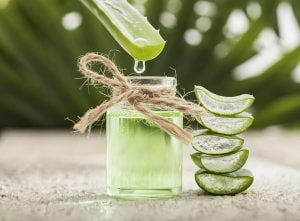
Benefits of Aloe Vera for the skin :
Although there are many products that contain Aloe Vera, it is important that they are of high quality and that they are used correctly so that the results are more noticeable. If you incorporate products with Aloe Vera into your beauty routine you can benefit from all the incredible properties that we are going to explain.
Aloe Vera and acne:
Aloe Vera has multiple benefits for treating oily or acne-prone skin. Aloe Vera gel is an excellent natural cleanser, as it contains a high percentage of enzymes, which allows us to gently exfoliate the skin when applied to the face or area to be treated. In addition, its pulp has properties that allow us to eliminate toxins and get rid of dead cells, taking maximum care of the skin’s hydration. We will have a skin free of impurities and hydrated at the same time.
The Aloe Vera plant also has antiseptic properties, so it destroys the germs that cause acne and it is also antifungal, which prevents the development of fungus, preventing infections. This combination of excellent properties helps to reduce acne. It should be borne in mind that acne can occur as a result of a skin infection or hormonal excess.
Here we tell you about the most beneficial properties of Aloe Vera to combat acne.
Acne is a very common problem, but above all annoying because in many cases this acne ends up leaving marks or scars that last over time and it is often difficult to get rid of these scars.
A remedy that will help us to combat this discomfort and other consequences of acne is the medicinal plant Aloe Vera. This incredible plant will provide us with multiple benefits that will make our skin look much healthier and free of imperfections. To do this we can use products containing Natural Aloe Vera and incorporate them into our daily routine so that we can notice visible changes after use. Thanks to the incredible properties of Aloe Vera you will be able to show off a healthy and blemish-free complexion.
We must also take into account that there are many factors that influence the appearance of acne, such as genetics, which can lead to an overproduction of oil, which is the main and most common cause of acne.
Aloe Vera is a plant that is also known worldwide by the name of Aloe Vera. This plant is mainly used for cosmetic and medicinal purposes. Aloe Vera juice is found inside its leaves and is rich in vitamins, minerals and other beneficial components. This juice is used in skin care treatments and for other treatments to improve the well-being and health of our organism.
Below, we will explain the incredible benefits of Aloe Vera for acne-prone skin.
Antibacterial
Firstly, aloe vera has antibacterial properties so it helps to reduce skin redness and also controls infections, which are the main cause of pimples.
Soothing
Aloe Vera has a soothing effect that relieves and reduces itching, which prevents us from scratching the affected area and, as a consequence, worsening the symptoms. This soothing effect leaves the skin feeling relaxed and refreshed.
Moisturising
Even if your skin suffers from acne, it is very important to keep it moisturised at all times. Aloe Vera, thanks to its watery texture, manages to moisturise our skin deeply without leaving a greasy or sticky feeling.
Thanks to its vitamin-rich pulp, it promotes the production of vitamins, which helps the skin to look healthier and fully regenerated.
It also promotes the healing of wounds or marks that have appeared as a result of acne. With Aloe Vera you will see how your complexion glows.
Astringent
Aloe Vera has an astringent effect on the skin, this means that when we apply it we can notice a certain tightness in the skin, this is because Aloe Vera closes the pores, thus preventing dirt from entering the pores, avoiding the appearance of acne.
Antioxidant
Aloe Vera has a high antioxidant power that helps the skin to regenerate naturally, strengthening the collagen fibres, leaving a smooth and fully regenerated skin.
To combat acne with Aloe Vera, it is important to use a cleanser containing Aloe and a moisturising cream, gel or soap with a high Aloe content to maximise the results and put an end to acne.
Aloe Vera and dry skin
Aloe Vera is characterised by its watery texture rich in mucopolysaccharides, which makes it an ideal product for all skin types. This watery texture means that the product is absorbed quickly without leaving a greasy feeling on the skin.
In addition, Aloe is able to penetrate into the deepest layers of the skin, moisturising from within, which gives us a healthy and moisturised skin. This power of penetration is due to the presence of an enzyme called lignin which makes it possible for the Aloe to reach the deepest layers of the dermis.
To hydrate the skin to the maximum, you could use a cream with Aloe Vera together with another moisturising component such as Olive Oil, so that the hydration is even more intense.
Aloe Vera and spots
The spots appear as a result of skin erosion due to certain factors, such as exposure to the sun. This is due to the loss of vitamins and pigment-enhancing properties that occur over time. Aloe Vera is an ideal treatment for treating spots on the face and hands, two of the areas where most spots appear due to exposure to the sun on these parts of the body.
Aloe Vera, thanks to its nutritional and vitamin richness, helps to combat these spots, which are very common in most middle-aged and elderly people.
To remedy this problem we can use a gel with a high Aloe Vera content to help our skin recover from the stress or factors that have caused the appearance of these spots. The gel should be applied regularly so that the blemishes disappear. With continuous treatment we can get rid of the blemishes and have a completely renewed skin.
Relieve pain and soothe your skin with Aloe Vera
Aloe Vera is high in phytosterols and emolin, which protect and reduce pain, so it can be used as a remedy to soothe pain and refresh the skin in a natural way.
All these properties make it a perfect ally, especially in summer, when we spend more hours exposed to the sun and eventually these hours of exposure end up taking their toll on our skin. In addition to the fact that in summer the number of skin irritations due to mosquitoes and/or insects also increases.
Aloe Vera soothes and refreshes the skin, giving an immediate sensation of hydration and relief. In addition, it protects and repairs damaged tissues, it is not only useful for overexposure to the sun, it can also be used in the following situations:
– Burns
– Wounds
– Blisters
– Irritation
– Erosion
The healing power of Aloe Vera
If you want to get rid of a scar, Aloe Vera is your solution as it is known worldwide for its great repairing and healing power, which is why it is used as a remedy to reduce scars and accelerate the healing process.
To do this, the Aloe pulp is applied to the wound or scar that we want to treat, this speeds up the recovery process, thanks to the large amount of plant hormones contained in Aloe. These hormones stimulate the production of collagen, which is a protein that forms part of the skin, thus stimulating the recovery of the tissues that have been treated.
For the recovery treatment to have optimum results, a product with a high Aloe Vera content must be applied regularly and continuously.
Rejuvenate your face with Aloe Vera
Aloe Vera provides one of the factors that all those who are interested in beauty and skin care want: to maintain youthful skin. It is one of the most difficult results to obtain and maintain over the years, but Aloe Vera will help us to achieve this in a natural way. Aloe Vera is an essential ingredient for correcting wrinkles on the skin, whether they are wrinkles on the face, hands or neck. Thanks to the vitamins and antioxidants contained in Aloe Vera, wrinkles can be effectively treated, leaving a smooth and much younger looking face.
This is possible thanks to the aforementioned properties, which also help to keep the dermis healthy as follows:
- Antioxidants: The pulp contains antioxidants that improve the suppleness of skin tissue and delay the appearance of fine lines.
- It protects the skin from ultraviolet rays, one of the causes of premature ageing. It is essential to combine its use with a cream with a high sun protection factor.
- Moisturising: The high moisturising power of Aloe provides a more elastic and smoother skin.
- Regeneration: Thanks to the constant regeneration of skin cells, skin ageing is delayed.
Aloe Vera and stretch marks
Aloe Vera is one of the most effective natural remedies against stretch marks. This is due to its high stimulation to produce collagen. Thanks to this it prevents stretch marks from appearing, as these are a consequence of the breakdown of collagen and elastin in the skin, with aloe vera activates the production of natural collagen.
The main reason for using Aloe Vera to conceal and/or prevent stretch marks is because this plant contains repairing, moisturising and regenerating properties.
This plant contains a high content of Vitamin E and C, which reduces blemishes. In addition, its antioxidant properties help the skin to repair its cells and keep it looking young. It should also be noted that the high water and mineral content of Aloe Vera helps to hydrate the deeper layers of the skin, which is beneficial for the reduction and concealment of stretch marks.
Stretch marks that are already present on the skin are the most difficult to remove, in particular stretch marks that have a whitish tone, as these are the ones that have been on the skin the longest.
To reduce their visibility it is advisable to use pure Aloe Vera gel and massage the area with the gel until the product is completely absorbed. If you use products with Aloe Vera in your daily routine you can achieve excellent results, you will notice how your skin is softened and looks as good as new, with much less visible stretch marks.
BENEFITS OF ALOE VERA FOR THE BODY
- Introduction
- Hair benefits
3.1 How to use Aloe for your hair
- Benefits of Aloe Vera for the body
- Benefits for muscles and joints
- Benefits for oral health
Aloe Vera is a plant known worldwide for the many benefits it has for our well-being. It has been used as a medicinal plant in different cultures throughout the ages. That is why it is still used today for all kinds of treatments, from skin care to remedies for sores and ulcers.
Over time new ways have been discovered to benefit from this incredible plant, although its most common use is still to treat and care for the skin, Aloe Vera also has beneficial properties for our body.
Aloe Vera hair benefits
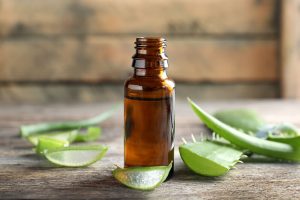
If you have dry and dull hair, Aloe Vera is your solution. By gently massaging with the product, we will be able to close the open pores of the scalp, reducing the risk of suffering from alopecia, as it manages to rejuvenate the hair follicles.
Thanks to the high power of Aloe Vera to penetrate our skin, it is able to moisturise and invigorate our hair from the inside, leaving it looking like new, full of shine and vitality. In addition, with its great moisturising power, it will eliminate the dandruff,
as it is often a consequence of dryness of the hair and scalp.
Aloe contains moisturising and repairing properties that strengthen the hair from the very root, favouring the growth of a strong, dense and shiny mane.
Its high vitamin and mineral content makes it the perfect ingredient for increasing hair growth, and its moisturising properties will make your hair grow longer, stronger, healthier and softer than ever before.
How can you use Aloe on your hair?
Shampoo: You can use a shampoo containing Aloe Vera. For the benefits explained in the previous sections to be really visible, it is necessary that this shampoo contains a minimum of 10% Aloe Vera, in this way the shampoo will be really effective and the results will be truly incredible.
Before washing: If we want to prepare our hair before washing, we can do it with Aloe. It will help to reduce excess oil and condition it before shampooing.
Hair growth stimulant: Aloe Vera gel can be used all over the hair, if we want to prevent hair loss or if, on the contrary, we want to stimulate hair growth, we will apply the gel in those areas where the density of hair has been reduced, in this way, with the gel and with a gentle massage, we stimulate hair growth.
Conditioner: After washing, we can use it as a nourishing mask, as its high water content makes it a very moisturising mask that will leave our hair soft and shiny. This mask can be applied from mid-lengths to ends as this is the part of the hair that generally suffers the most from dryness.
Benefits of Aloe Vera for the body:
Although Aloe is mostly used for cosmetic purposes, this wonderful plant is also capable of providing endless benefits to our body.
Drinkable Aloe Vera juice, consumed in moderation, according to its indications, is one of the products that will improve our well-being. This juice helps to improve digestion, cleanses the body, relieves intestinal problems by regulating intestinal transit, in the case of constipation. Aloin, a plant compound found under the skin of the leaf, has laxative effects, thus effectively helping if you suffer from constipation.
In addition, the pulp of this plant also protects the body, preventing gastric ulcers. It also helps to prevent annoying liver infections.
The consumption of Aloe juice also helps to regulate blood sugar in a completely natural way, in this way, this plant has become a very common remedy against diabetes, as it is also able to improve insulin sensitivity and thanks to this also helps our body to improve control over blood sugar.
It is important to remember that Aloe can be used as a complement during different types of treatment, but the indications and recommendations of a medical specialist must always be followed.
Aloe Vera has a high water content, which is why the juice is highly hydrating. Despite this, the consumption of water should be the main one, as this juice would simply act as a food supplement that will help us to complement the daily hydration that our body needs.
Benefits for muscles and joints:
One of the main virtues of Aloe Vera is that it relieves pain immediately, which is why it is an indispensable element when treating minor injuries to muscles or joints, such as sprains, strains or lumbago.
It does not serve as a remedy to completely cure these injuries, its use is limited to a complementary treatment to alleviate minor aches and pains.
Aloe Vera is also a great ally when it comes to treating discomfort caused by inflammation in muscles and joints. Its anti-inflammatory properties will improve our well-being, especially for those who suffer from arthritis or rheumatism, as the daily use of this plant can help to alleviate the discomfort caused by these pathologies.
Oral health benefits
100% pure Aloe Vera juice is an excellent dental plaque cleaner, its daily use reduces the amount of dental plaque accumulated on the teeth, such is its effectiveness that it is on a par with chlorhexidine, a key ingredient used in conventional mouthwashes to remove dental plaque.
In addition to reducing dental plaque, Aloe juice, thanks to the great healing power of this plant, can also be used to treat mouth ulcers or sores, as it incredibly accelerates their healing process. It also reduces the pain produced by these wounds, relieving the most common symptoms of these pathologies.
BENEFITS OF ALOE VERA FOR HAND CARE
Aloe Vera is a plant also known by the name of Aloe. Its difference with the rest of Aloe is that its gel is a real gift from nature, as it has endless benefits for the care of our body.
Below we will explain the properties of this plant and how to take advantage of them to take care of our hands.
Hands are one of the most exposed parts of the body in our daily life. They are exposed to all external agents, such as the cold, the constant use of disinfectant gel, etc. Our hands help us to carry out our daily tasks, which is why we must take special care of them.
How can we take care of our hands with Aloe Vera?
El Aloe Vera es una planta muy completa ya que tiene un gran contenido de vitaminas, minerales, enzimas, aceites y proteínas, entre muchos otros. La crema de aloe vera es un producto esencial para el cuidado de las manos ya que nos ayuda a protegerlas, cuidarlas y mantenerlas con un aspecto impecable.
This plant has a high moisturising power and thanks to its great penetration capacity, it will moisturise our hands down to the deepest layers of the skin. Thanks to this, we will have healthy and strong hands, preventing their weakening and dryness. In addition, moisturising the hands also hydrates the cuticles of the nails, keeping the cuticles moisturised favours the growth of healthy and strong nails.
Aloe Vera, thanks to its watery texture, is easily absorbed and does not leave a greasy or sticky feeling. In addition, with its soothing effect, it relieves the uncomfortable feeling of cracked and sore hands.
It also helps to strengthen the nails directly when applied to the hands, promoting nail growth and preventing them from breaking easily as they will grow much stronger. On the other hand, it also promotes the regeneration of nails that are damaged or weak and therefore have stretch marks. Aloe softens these stretch marks thanks to the vitamins it provides to the nail tissue.
This plant also has a cleansing action, so that, after use, it will leave hands completely clean and free of impurities.
It is worth highlighting the ability of Aloe Vera to reduce the appearance of blemishes on the skin, especially on the hands. The hands, as a result of their high exposure to different external agents such as sunlight, are an area of the body where the appearance of spots is quite common.
Aloe Vera is the perfect ally to reduce existing blemishes and prevent them from appearing even more. With its natural and unique formula of minerals and vitamins, it will provide elasticity and nourishment to the skin of your hands.
To reduce the appearance of blemishes it is important to use a cream or gel with a high percentage of Aloe Vera, so that the results will be much more visible. This type of cream can be used daily, as often as necessary.
To take care of the hands from the most harmful external agents such as the sun, the cold or the wind, it is important to use hand creams with a high moisturising capacity, as hands dry and crack very easily. When hands become dry and chapped, it is difficult to quickly restore the skin’s moisture and elasticity, as it takes time for the skin to recover completely, which also depends on the condition of the hands.
It is necessary to follow this care all year round, as in winter it is easier for hands to dry out and crack, but in summer it is much easier for blemishes to appear due to the greater exposure to the sun during this time of year.
In winter we must focus more than ever on taking care of the hydration of our hands, as this is the time of year when our hands suffer the most. The cold is capable of cracking and drying the hands quickly, so we must avoid this by using a moisturising hand cream with Aloe Vera so that the hydration is much more intense. Having chapped hands causes a very annoying and painful sensation, so we must prevent this from happening. Apart from the use of Aloe Vera as a moisturiser, it is also important to protect the hands from the cold, for example, by wearing gloves, so that we can avoid or reduce the effects of the cold on the hands.
One of the reasons why hands dry out is as a result of contact with aggressive products. Nowadays, with the covid-19 pandemic, there is an excessive use of hydroalcoholic gel and our hands suffer the worst consequences. Now more than ever we must take care of the skin on our hands because with hydroalcoholic gel we are punishing our hands continuously, as its excessive use can be harmful to our skin. That is why we must take care of our hands with moisturising creams with natural components such as Aloe Vera. Aloe Vera gels can also be used to deeply moisturise the hands and protect them from the aggressive and drying ingredients of disinfectant gels.
ALOE VERA IN COSMETICS, SPORT AND MEDICINE
Aloe Vera or Aloe is a plant with many medicinal properties, which is why its use is historical. It has been used for millennia by different cultures since its pulp was known for its medicinal benefits, which were unique in those times.
1. Cosmetic uses
1.1 Perfect Skin
1.2 Bye-bye Varicose Veins
2. Sport Uses
3. Medicinal Uses
Perfect Skin:
Aloe is mostly used for cosmetic purposes. This is due to its richness in vitamins and minerals, which provide incredible benefits to the skin. Its astringent effect, its capacity to eliminate wrinkles thanks to its high moisturising power, it treats acne and eliminates scars, it relieves irritations, it is able to remove warts and heals sunburn.
All this richness makes it a very useful product for skin and body care. Below we will explain some of the cosmetic uses of this incredible plant.
Perfect Skin:
Its high vitamin content makes it the perfect ally for our skin. It is capable of softening the skin thanks to its great capacity to eliminate impurities and deeply cleanse the skin. This is why it is one of the best products for treating acne. The astringent effect of Aloe and its antibacterial properties make it the ideal product for treating acne-prone skin.
To treat acne, you can use different products, among them, a facial cleanser with aloe vera is indispensable as it deeply cleanses the skin, getting rid of all the bacteria that cause acne.
On the other hand, you can combine the use of the facial cleanser with the use of an aloe vera gel, this gel will help fight the scars that may have been caused by acne and also soothes and relieves your skin from small infections and inflammations that appear on the skin as a result of acne.
It is important to choose products with a high aloe vera content for the best and most visible results.
Bye-bye Varicose Veins:
If you have come this far you will already know that Aloe Vera has a high moisturising and softening power on the skin. This makes aloe a very effective remedy against varicose veins.
Its great regenerative power and penetration into the layers of the skin, makes the skin cells are activated quickly and expel bacteria and fat deposits that cause the obstruction of the veins and consequently the appearance of varicose veins.
Sport uses:
Aloe gel can also be used to treat discomfort caused by sports. It relieves blisters and skin irritations on the feet, and can also alleviate the bad smell of sweat.
Aloe Vera also helps to eliminate pain, so it is ideal if we want to relieve minor discomfort after sport. In addition, it also serves as a complement to treat sprains, lumbago, tendinitis or sprains among others because, apart from eliminating pain, aloe has an anti-inflammatory effect, so it helps to relieve this type of annoying injuries that are especially common in athletes.
Its incredible content of nutrients, vitamins and minerals makes it a superfood for athletes or people who like sports, as it has a high energy value that provides a large amount of energy after the consumption of aloe vera juice.
Before consumption, aloe must be treated, as it contains a high amount of aloin. Aloin is a component with a strong laxative effect, so it may cause counterproductive effects if consumed directly.
Medicinal Uses:
Aloe Vera is a biologically active plant that includes vitamins, minerals, saccharides, amino acids, enzymes, among many others. Aloe Vera contains many vitamins and minerals that help the body to function properly. This plant has such a complete composition of vitamins and minerals that it strengthens the cells and tissues of the body, which is why it is recommended to alleviate problems such as acne, blemishes and skin scars.
Aloe Vera has an action on the gastric mucosa, which allows its restructuring and better digestion, which is why it is so widely used for the digestive system.
Another of the benefits of Aloe Vera for our body is its ability to regulate the levels of triglycerides by reducing the glucose in the blood.
Its antihistamine power makes it a perfect product for those who suffer from mild respiratory problems such as asthma, as it helps to dilate the bronchial tubes in a completely natural way.
The consumption of Aloe Vera also strengthens the immune system, making it more resistant to viruses and bacteria, so it can act quickly in the face of any possible threat.
To consume Aloe Vera safely, we recommend stabilised Aloe Vera juice, its natural flavour is quite bitter, so there are some that use natural ingredients such as honey to make its flavour much more pleasant.
All these medicinal uses are recommended, but it is important that they are always consulted with a professional doctor, as there are pathologies that should be treated directly by health professionals. It is also important not to make incorrect or excessive use of the above recommendations.
ALOE VERA IN YOUR DIET
1. Why should you include Aloe Vera in your diet?
2. Benefits of Aloe Vera in your daily diet
3. How to integrate Aloe Vera into your diet?
Why should you include Aloe Vera in your diet?
Aloe Vera is well known for being a medicinal plant and for its many benefits when used as a cosmetic, but it is also an ingredient that can be used to diet and achieve quick results. Although not everything goes, we must not overdo it or stop taking care of our diet, Aloe Vera in diets acts as a food supplement, not as a substitute.
Aloin is the main reason why this plant is used for dieting or slimming. This compound gives Aloe Vera a bitter taste accompanied by innumerable benefits such as, for example, reducing fluid retention or preventing bloating, as well as promoting intestinal movement.
This type of diet with Aloe Vera is recommended for people who have intestinal problems, as Aloe Vera has surprisingly high nutritional values that favour the intestine. In addition, it is often used for weight loss as it also produces a satiety effect. So, if you add Aloe Vera juice or Aloe Vera shake to your diet, you can achieve a healthy habit that will complement your diet in a natural way.
All Aloe Vera diets should be accompanied by some exercise and a good diet to achieve optimal results. Combining both will make it easier to have a healthy lifestyle.
There are some contraindications to making excessive use of this plant, as aloin, if consumed in excess, can be toxic, so excessive use of this natural plant is not recommended. However, there are currently several juices on the market that undergo processes to eliminate this toxic substance so that it can be enjoyed without worry.
Benefits of Aloe Vera in your diet:
- Helps you lose weight
- Improves circulation
- Prevents ulcers
- Prevents stomach pains
- Purifies the body
- Purifies toxins
- Prevents constipation
- Reduces fluid retention
- Contributes to healthy skin
- Improves heart health
- Provides vitamins
- Lowers high levels of bad cholesterol (LDL)
- Helps increase good cholesterol levels (HDL)
- Cures internal intestinal irritations
How to integrate Aloe Vera into your diet?
It is the most characteristic juice when dieting with Aloe Vera. It is a juice that is recommended to be taken on an empty stomach every morning without consuming anything until one hour later. This is to give it time to purify the body by eliminating toxins.
To make this juice it is necessary to:
- Have 1 lemon
- Fill a glass of water up to 200 ml.
- Fill two spoonfuls of honey
- Fill 3 small spoonfuls of aloe vera.
- Put all the ingredients in the fire except the honey.
- Stir until well blended
- Add the honey
- Wait until it is lukewarm before drinking it
This shake is used for dieting as it can be considered as a regenerative shake containing vitamin C and revitalising properties that provide the energy the body needs. It also helps in the production of collagen.
To make this smoothie you need
- 1 chopped pear
- 4 chopped strawberries
- A glass with 100ml of aloe and pomegranate juice.
- Pour the fruit into a blender to make it a little liquid.
- Then pour in the juice
- Blend until you can see that everything is well blended.
This smoothie is a bit more complex to make as you need more ingredients to make it. This revitalising smoothie will provide not only nutrients but also hydration to your body.
To make this smoothie you need
- Plain yoghurt
- Pour a plain yoghurt into a blender.
- Coconut oil
- Add a tablespoon of coconut oil to the blender along with the yoghurt.
- Honey
- Aloe vera juice
- Spirulina powder
- Add the desired amount of coconut oil to the blender, one tablespoon is recommended, then the syrup and finally two tablespoons of spirulina powder.
- Kale
- Chopped banana
- Pour one kale leaf and the chopped bananas into the blender.
- Blend until everything is well combined
Both ingredients stand out when thinking about healthy foods to help you lose weight and be healthy. They act as an anti-inflammatory which is very good for preventing some intestinal diseases. However, you should avoid excesses, it is preferable not to exceed the amount of 3 grams of ginger per day and not to exceed the dose of aloe vera recommended below. Also, try to avoid ginger if you suffer from Crohn's disease or hypertension.
The way to prepare this delicious and healthy drink is:
- Bring water to a boil.
- Once it reaches boiling point, add half a teaspoon of grated fresh ginger.
- In turn, add a tablespoon of aloe to the boiling water.
- Leave the mixture boiling for 15 minutes
- Remove it from the heat and leave it to stand for 10 minutes.
- Finally, strain it through a sieve.
- If you prefer a sweeter taste, add a little honey to taste.
ALOE VERA PRODUCTS USED BY B&B MARKET AND THEIR BENEFITS
- Krauter Oil 110 Herbs & Aloe Vera
- Roll – On Rescue Gel With Aloe Vera
- Snail Slime & Aloe Vera Cream
- Aloe Vera and Natural Calendula Soap
- Exfoliating Soap with Aloe Vera, Honey and Natural Cinnamon
- Soap with Aloe Vera, Rosemary and Natural Ghassoul
- Mediterranean Herbal Facial Soap with Natural Aloe Vera
- Natural Aloe Vera and Lavender Soap
- Organic Aloe Vera Cosmos Organic Natural Aloe Vera Gel
- Moisturising Body Milk
In Bienestar y Belleza Market, we care about offering quality products to our customers. That is why in most of our beauty products Aloe Vera is the protagonist. Below, we will talk about the B&B products that contain this plant and the benefits they provide.
Krauter Oil 110 Herbs & Aloe Vera
The Krauter Oil 110 Herbs & Aloe Vera, is a very special oil as it is composed of various oils such as Olive Oil, Eucalyptus, Lavender, Aniseed and several others which together with Aloe Vera make this product an essential oil. Its function is to act as a natural remedy in areas of muscular pain.
The main benefit of this oil is that it offers a soothing effect, relaxing the area of your body that is in pain or aches. This is achieved thanks to the blend of the different oils mentioned at the beginning. At the same time, thanks to the Aloe Vera, Rosemary and/or Peppermint among others, this product has an antibacterial effect.
Roll-On Rescue Gel with Aloe Vera
The Roll – On Rescue Gel, is one of the essential products to have at home due to its multiple beneficial functions. The purpose of this product is similar to the previous one, it tries to relieve muscle pain such as a sprain, pain in the lower back or the swelling that appears when you give yourself a blow.
Aloe Vera is one of the main components in this product along with other medicinal plants such as Devil’s Claw. These two ingredients together make this product act quickly as an anti-inflammatory, even relieving insect bites.
Crema de Baba de Caracol & Aloe Vera
The Snail Slime and Aloe Vera Cream by B&B Market has the function of regenerating and moisturising the skin so that the signs of ageing diminish or delay their appearance.
The function of Aloe Vera in this cream is to provide its properties to guarantee hydration and cell regeneration. This is why, by mixing Snail Slime with Aloe Vera, they create a natural anti-ageing and moisturising cream that is absorbed quickly and protects the skin from any external agent.
Aloe Vera and Natural Calendula Soap
The Aloe Vera and Calendula Soap is dedicated to people with sensitive, irritated or atopic skin. At the same time, this soap can also be used by children to care for their delicate skin.
Aloe Vera contains anti-inflammatory and antibacterial effects, which is why this soap is ideal for people with sensitive skin. In addition, together with Calendula, this product can be used all over the body to ensure clean, soft and moisturised skin.
Another thing to note about this product is that it has been certified for Demeter Conversion.
Exfoliating Soap Scrub with Aloe Vera, Honey and Natural Cinnamon
The Exfoliating Soap Scrub with Aloe Vera, Honey and Natural Cinnamon, contains pure Aloe Vera extracted directly from the plant. Its main function is to exfoliate the skin leaving a completely clean skin. That is why Aloe Vera has to be part of this composition of products that the soap has, as it provides the necessary hydration to the skin.
The cinnamon in this product is in charge of cleaning the skin acting as a natural exfoliant, and the Aloe Vera is the one that acts afterwards to moisturise and regenerate. Thus, with the combination of these ingredients, a result in accordance with the function of the product is achieved.
This soap has also been certified in Demeter Conversion. And it contains other certificates of Organic Agriculture, so it can be guaranteed that its manufacture has been completely ecological and natural.
Soap Aloe Vera, Rosemary and Natural Ghassoul
The Soap Aloe Vera, Rosemary and Natural Ghassoul is another product that has been certified in Demeter Conversion. This soap is especially dedicated to people with oily or combination skin.
In this product, Ghassoul and Rosemary are used to cleanse the skin of impurities, and Aloe Vera, having properties that combat acne-prone skin, provides its anti-inflammatory and moisturising function. The result is a product that deeply cleanses the skin, leaving your body soft, clean and smelling good.
Mediterranean Herbal Facial Soap with Natural Aloe Vera
The Mediterranean Herbal Facial Soap with Natural Aloe Vera, is a certified Demeter Reconversion soap that is especially suitable for facial care. Regardless of whether you have combination, normal or oily skin, this soap will make your skin radiant.
The mild aroma of this product is achieved thanks to the Mediterranean plants contained in this soap. The Aloe Vera acts to provide firming and repairing active ingredients. In this way, this facial soap will also help to combat the signs of ageing, resulting in skin that is completely clean, youthful and soothed.
Aloe Vera and Natural Lavender Soap
The Aloe Vera and Natural Lavender Soap by B&B Market, is 100% organic and contains 16-17% Pure Aloe Vera certified in Demeter Conversion. This product is especially dedicated to people suffering from dry skin.
The Aloe Vera in this soap acts on those problems of irritation or dryness that dry skin can suffer. It is also responsible for protecting the layers of the skin to maintain its natural moisture and thus avoid dry skin problems.
It also contains a healing power thanks to the Aloe Vera, which will favour the regeneration of the cellular tissues of the skin. At the same time, this soap is able to conceal blemishes that may appear due to the sun.
In short, thanks to the properties of Aloe and the effects of Lavender, this soap provides shine, prevents skin dryness problems and favours cell regeneration.
Organic Aloe Vera Gel Cosmos Organic Natural
The Cosmos Organic Natural Organic Aloe Vera Gel contains natural Aloe Vera leaves. This product has obtained certificates such as Ecocert, followed by organic farming regulations.
Thanks to its main component, Aloe Vera, this product is recommended for those skins that need hydration, burns, closed wounds, stretch marks, acne-prone skin, wrinkles, bites, blemishes…
This gel is so complete as it contains 96% natural and high quality Aloe Vera. That is why after use you will notice a soft, clean, moisturised, oxygenated and glowing skin.
Moisturising Body Milk
The Moisturising Body Milk by Bienestar and Belleza Market will provide your body with extra hydration that will be noticeable from the first use..
This body milk has been created with 81% pure Aloe Vera and a set of oils and ingredients that have made this product indispensable for skin that suffers from irritation or dryness.
The results can be perceived from the first drop where the high moisturising power of the product can be observed. In addition, it is able to show a completely hydrated and smooth skin, without leaving a trace of dryness on the skin and without leaving you with a sticky skin feeling.
ALOE VERA AND ITS DIFFERENT FORMATS
Aloe Vera is a medicinal plant that provides different benefits, which is why there are many ways to use it, such as moisturisers, gels, soaps, scrubs, drinkable juices, capsules, among others. Below we will explain the benefits and uses that can be given to these different formats.
Creams are probably the most popular format as Aloe Vera is known for its cosmetic benefits and especially for the skin. Aloe Vera cream provides incredible hydration to the skin, giving elasticity and softness to the skin.
Aloe Vera gels act as protectors on our skin, protecting the skin from external threats. It also helps to regenerate the skin, leaving as a result a soft and luminous skin.
Aloe Vera has, among all its properties, an exfoliating action, making it a totally natural exfoliant. This type of product is especially recommended for people with blemished skin. Its exfoliating action removes dead skin cells, promoting cell regeneration and combating premature skin ageing. In addition, it also helps prevent acne thanks to its high mineral and vitamin content. Thanks to its great healing power, it heals the small wounds that appear as a result of acne and erases the marks or spots that often appear as a result of acne.
The juice that we are going to talk about next is not the juice that is extracted directly from the Aloe plant, as this juice has to be treated before it can be consumed. Aloe has an ingredient called Aloin, this component causes laxative effects and that is why it is eliminated from the drinkable juice, to avoid contrary effects.
Aloe Vera juice is very bitter, there are different recipes to make the taste more pleasant. If you want to know more about how you can integrate Aloe Vera in your diet, read our post on how to include Aloe Vera in your diet, in this post you will find different recipes made from Aloe Vera.
Soaps containing Aloe Vera allow us to deeply cleanse the skin while providing us with the benefits of this plant, such as hydration. It is important to use a soap with these properties in our facial cleansing in order to thoroughly cleanse the skin and leave it free of impurities. Soap is the basis of facial cleansing, if the soap does not leave the skin completely clean, the rest of the products we use in our routine will not have the same effects, as they may not be completely absorbed because the skin is not completely clean.
Aloe Vera capsules strengthen your immune system and help to improve intestinal transit. They are also used as a method to lose weight and to purify the liver, this is possible thanks to the purifying properties contained in Aloe Vera, losing weight will be possible if the diet is complemented with physical exercise, this plant will help the process to be more efficient and faster.
If they contain aloin, they can be used as a treatment for constipation, as this component has a laxative effect. It is also a very effective remedy for gastritis, as Aloe Vera is a great analgesic.
ALOE VERA CERTIFICATES
- What is a Certified Product?
- What are the benefits of a certified product?
- Aloe Vera Certificates
What is a Certified Product?
Certifying a product serves to demonstrate to the market that the person or organisation supplying it can make quality products, and that they have followed a very rigorous process. A certified product demonstrates that it is a product whose manufacturing process has been accredited by the relevant authorities and that, therefore, it complies with both quality and environmental requirements.
Depending on the product to be certified, the processes it undergoes before obtaining the certificate are: inspections of the manufacturing process, tests on some of the samples taken by the certifying body and, finally, an audit of the quality systems.
The certification of a quality system is not the same as the certification of a product of a specific brand. The first means that the company has the appropriate means to make quality products, but it does not take samples of all the products to be able to verify that they are made with the means that the quality company has. The second guarantees and controls the adherence of the products to regulations and standards.
What Benefits Does a Certified Product Offer?
First of all, the objective of any product certification is to give consumers confidence. A person who sees that the product he or she is going to buy has a certificate tends to trust that product more than one that does not, or at least knows that the certified product has a quality that the other probably does not. Another of the benefits of a certified product is that by eliminating sampling to verify compliance with the requirements, the cost of reception for the customer is lower.
For a company, certifying its products leads to several advantages such as, for example, international recognition. A certified product has easier access to other markets. Also, the risk on the part of the company of offering a product in poor condition decreases, since it has followed a fairly exhaustive evaluation and analysis process. In addition, it improves the positioning of the company, since in today’s market there are countless products to choose from, so companies have to differentiate themselves in some way, and one way to do this is through certification.
But for the consumer, the biggest advantage that a certified product can have is that you are guaranteeing that the product is good, that it is of quality, that it has followed a very rigorous process of audits and tests until it has been found to be a good and reliable product.
Aloe Vera Certificates
Other Certificates:
You may find on many beauty products a label that says: Demeter. This is a mark for products that have been created through biodynamic agriculture. This mark is exclusive to those processors or farmers who have contracted to be certified, and therefore inspected, by this organisation.
A product with this label means that it complies with the Demeter Production Standard, who control that the process has no imperfections, from the time it is grown in the field until the product is packaged for delivery to the final consumer.
This international association is made up of producers who create organic and natural cosmetics on a non-profit basis. It is a company that offers its Natrue seal to other companies that have carried out audits and obtained a certificate from a certifying body.
They have three different types of seals: those for natural cosmetics, whose ingredients have to be natural, but not explicitly organic. The seal of natural cosmetics with some organic part, namely 70% has to be organic. And the organic cosmetics label where at least 95% has to be natural and organic.
The three seals have in common that none of them admit silicones, synthetic fragrances, colourants, petroleum derivatives, genetically modified organisms or have been tested on animals.
Organic Agriculture in Europe is a certification that is applied to food or agricultural raw materials, and we can find it on certain products containing Aloe Vera.
This seal guarantees that at least 95% of its ingredients are organic, that its manufacturing process protects the environment, that the product does not contain synthetic chemicals and that it has respected both animal welfare and natural cycles.
As we can see in its logo, all products with this certificate are products regulated by the European Commission, which means that they respect its rules, which contain requirements for animal welfare, health and respect for the environment.
From France comes this certifier called ECOCERT which is possibly one of the best known in Europe. This certifier can be divided into cosmetics certified as organic, where 95% of its plant ingredients must be from organic farming. On the other hand, it can also be divided into cosmetics certified as natural, where at least 50% of the plant ingredients must be from organic farming.
It should be noted that 95% of the ingredients must be of natural origin or natural, and this is a condition that must be explicitly fulfilled in order to obtain the seal. In turn, ECOCERT verifies that the ingredients used have to come from renewable resources and have to have been transformed with processes that respect the environment.
Therefore, if a product contains this certificate, it means that there are no silicones, no ingredients of animal origin (except for honey or milk), no nanoparticles, no parabens and, in addition, it verifies that the packaging the product comes in is biodegradable.


 TAKE CARE OF YOURSELF
TAKE CARE OF YOURSELF HOME
HOME FITNESS
FITNESS








